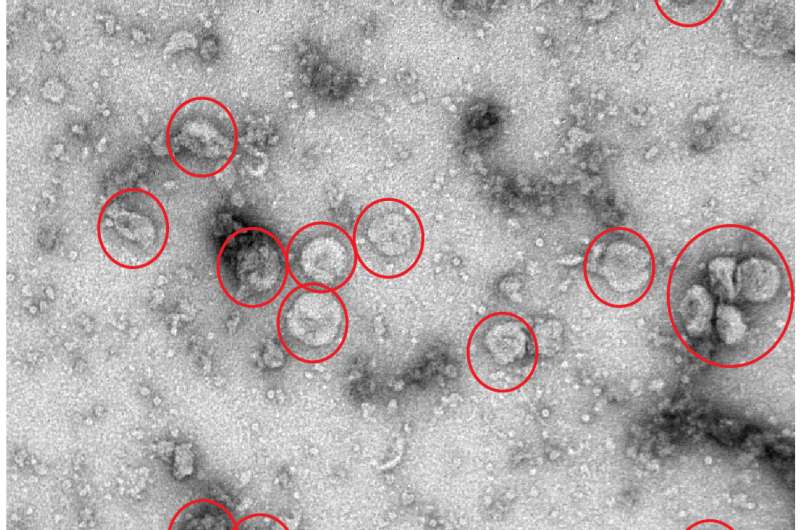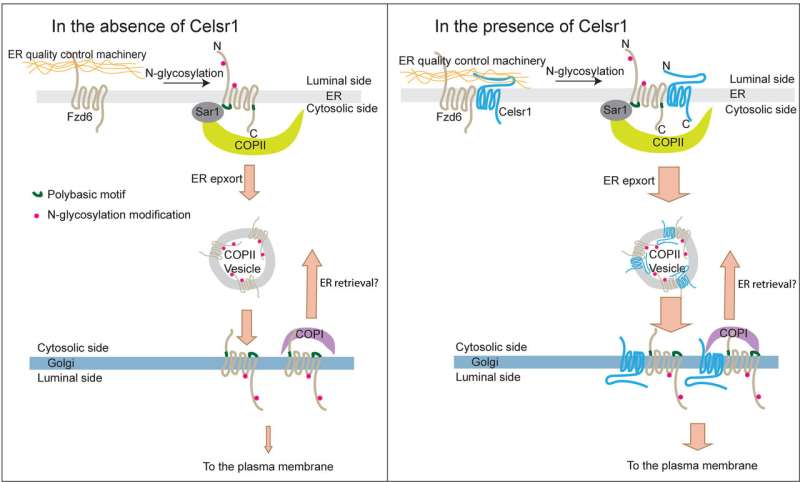Researchers discover a novel mechanism regulating planar cell polarity

Planar cell polarity (PCP), a process in which the epithelial tissues are polarized within the plane of the epithelium, plays an important role in development and organ function. Defects in PCP are associated with a variety of human diseases including cancer metastasis, neurological disorders, skeletal dysplasias and congenital heart disease. The establishment of PCP is regulated by an evolutionarily conserved set of signaling proteins. After their synthesis, many of these PCP proteins are delivered along the secretory transport pathway to the cell surface, where they perform their physiological functions. However, the molecular mechanisms that regulate PCP protein transport remain largely unclear.
In the secretory transport pathway, newly synthesized transmembrane PCP proteins are firstly translocated into an intracellular organelle called the endoplasmic reticulum (ER), where they are folded and modified. These proteins are then packaged into transport vesicles mediated by the COPII machinery. These transport vesicles function as vehicles to deliver their cargo proteins to the next station, the Golgi apparatus, en route to the cell surface. Movie 1 demonstrates surface delivery of newly synthesized epidermal growth factors receptor (EGFR) in this pathway.
Prof Guo and his collaborators discovered that a polybasic motif located on Frizzled-6 directly interacts with the E62 and E63 residues on an important component in the COPII machinery, Sar1A. This novel protein interaction is critical for exporting Frizzled-6 out of the ER, the first step in the secretory transport pathway. In addition, the study indicates that association of another PCP protein, CELSR1, with Frizzled-6 is important, enabling efficient Frizzled-6 delivery to the cell surface, providing a quality-control mechanism that ensures appropriate stoichiometry of these two PCP proteins at cell surface.
These studies uncover novel insight into the molecular machinery that regulates ER export of Frizzled-6. Activation of PCP pathway plays important roles in cancer metastasis. Currently, there is no effective therapeutic strategy to specifically downregulate PCP pathway. PCP proteins need to be located on cell surface to regulate PCP. Prof Guo's study provides important information to guide the rational design of inhibitors to block SAR1A/Frizzled-6 interaction to inhibit the surface delivery process, offering a novel therapeutic strategy to downregulate PCP signaling for cancer treatment.

The findings were recently published in scientific journal Journal of Biological Chemistry.
More information: Xiao Tang et al, Molecular mechanisms that regulate export of the planar cell-polarity protein Frizzled-6 out of the endoplasmic reticulum, Journal of Biological Chemistry (2020). DOI: 10.1074/jbc.RA120.012835
Journal information: Journal of Biological Chemistry
Provided by Hong Kong University of Science and Technology





















